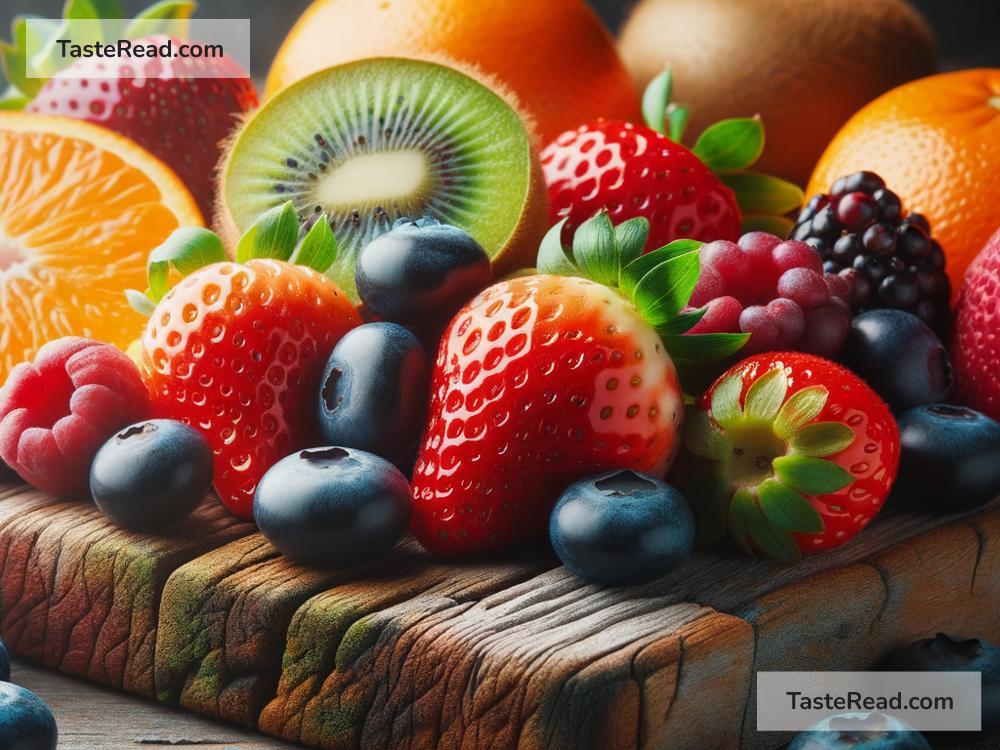The Role of Antioxidants in Shaping Fruit Flavors
Have you ever wondered why fruits like strawberries, apples, and oranges taste so delightful? One big reason for their amazing flavors is the work of antioxidants. These tiny but powerful molecules not only keep fruits healthy as they grow, but they also play a key role in giving fruits their unique flavors. While antioxidants are often praised for their health benefits, they also deeply influence the taste, aroma, and overall appeal of the fruits we love. Let’s dive into the fascinating world of antioxidants and their role in shaping fruit flavors!
What Are Antioxidants?
Antioxidants are natural compounds found in fruits, vegetables, and other foods. Their primary job is to fight free radicals — harmful molecules that can damage cells. Free radicals are created through processes like exposure to sunlight, pollution, and even the fruit’s own metabolism. Left unchecked, these free radicals can cause oxidative stress, leading to the breakdown of cells and affecting the fruit’s color, texture, and flavor.
To prevent damage, plants produce antioxidants, including vitamins (like vitamin C), polyphenols, carotenoids, and flavonoids. These antioxidants act like shields, neutralizing free radicals and helping fruits stay fresh and tasty.
How Do Antioxidants Influence Fruit Flavors?
Now, let’s focus on the fun part: flavors! Fruits get their flavors from a mix of compounds such as sugars, acids, and aromatic molecules. Antioxidants play a role in preserving and enhancing these flavor compounds by maintaining the fruit’s chemical balance.
Below are some specific ways antioxidants shape fruit flavors:
1. Protecting Fragile Flavor Molecules
Many of the compounds responsible for a fruit’s taste and aroma are sensitive to oxidation (damage caused by free radicals). For example, terpenes give citrus fruits their zesty aroma, and esters contribute to the sweet smell of bananas. Without antioxidants to protect these fragile molecules, flavor compounds can break down and become less vibrant. That’s why fruits with high antioxidant levels often taste fresher and more intense.
2. Balancing Sweetness and Acidity
Antioxidants help regulate the levels of sugars and acids in fruits. Fruits like pineapples, mangos, and cherries owe their balanced taste — a harmonious mix of sweet and tart — to the antioxidants working behind the scenes. Flavonoids, a type of antioxidant, can directly interact with acids and sugars, often enhancing the sweetness or mellowing the sourness.
3. Encouraging Aromatic Flavor Profiles
Ever noticed how berries, such as blueberries and raspberries, have a rich and complex taste? This distinct flavor comes largely from polyphenols, a type of antioxidant found in high amounts in these fruits. Polyphenols, along with other aromatic molecules, create depth in flavor and give fruits their unique character.
4. Helping Fruits Ripen
Ripening is an important stage in a fruit’s flavor development. During this process, antioxidants play a crucial role in controlling the chemical reactions that transform a raw, bitter fruit into a sweet and flavorful treat. For example, as a banana ripens, antioxidants like vitamin C and flavonoids help break down starches into sugars, making the fruit sweeter.
Different Antioxidants, Different Flavors
Not all fruits are the same, and neither are their antioxidants. Different types of antioxidants contribute to unique flavors:
- Vitamin C: Found abundantly in citrus fruits like oranges and lemons, vitamin C enhances tartness and brightness. It also preserves aroma and taste by preventing oxidation.
- Flavonoids: These antioxidants are responsible for the bold and tangy flavors of berries like blackberries and cranberries. Flavonoids add depth and complexity to the taste.
- Carotenoids: Found in fruits like papaya and mango, carotenoids give these fruits their rich, sweet, and tropical flavors.
- Phenolic compounds: These are found in apples and pears, contributing to their crisp and refreshing taste.
Antioxidants and Post-Harvest Flavor
Antioxidants also contribute to how fruits taste after they are harvested. When fruits are exposed to air or stored for long periods, oxidation can reduce their flavor quality. Antioxidants slow this process down, helping fruits maintain their fresh taste for longer.
For example, apples that are stored for weeks in a fridge lose some of their crunch and flavor, but if antioxidants are preserved in the fruit, it retains more of its original taste. This is one reason why fresh fruits packed with antioxidants often taste better.
Antioxidants Make Fruits Delicious and Healthy
Besides shaping their flavors, antioxidants make fruits good for your health. They help fight inflammation, boost your immune system, and protect your body from oxidative stress that causes aging and disease. So, when you’re enjoying a juicy strawberry or biting into a crisp apple, know that the antioxidants aren’t just making the fruit taste amazing, they’re also helping your body stay strong.
Conclusion
Antioxidants are like unsung heroes in the flavor world of fruits. They protect fragile flavor molecules, balance sweetness and acidity, enhance aromas, and drive the ripening process. Without antioxidants, fruits wouldn’t taste nearly as good, and their nutritional value would be diminished. So, the next time you savor a delicious fruit, take a moment to appreciate the incredible work of antioxidants — shaping flavors, keeping fruits fresh, and improving your health in every bite!


